- Popular Post

kscarbel2
-
Posts
17,806 -
Joined
-
Days Won
85
Content Type
Profiles
Forums
Gallery
Events
Blogs
BMT Wiki
Collections
Store
Posts posted by kscarbel2
-
-
As I was told, the Tidewater N indeed was an ex-N68F fire chassis (purchased because of its better-than-average condition), and Matt Pfahl did one of his superb ground-up restorations.
I met the current owner at Hershey. He also owns a superbly restored 1940 Mack ED pickup.
-
- Popular Post
- Popular Post
kscarbel- May I copy and post all of the images here in my FWD Facebook page???
America's trucking history belongs to no one individual. This rich history is part of the fabric that defines what makes us Americans, and should be shared with all.
-
 6
6
-
Diggin' that R-Model! anyone notice its pulling a Matlack tanker? they were a BIG user of Macks,they had a satellite terminal near me in Swedesboro,NJ right off Route 322,there is a Kenworth dealership there now.................................Mark
Matlack, like Chemical Leaman, Air Products and Overnite, was a major Mack customer.
But that's no R-model, that's an RS Value-Liner, an extremely different truck from the R and my personal favorite.
-
 1
1
-
-
Yet another FWD COE, the "America".
FWD impresses with a modern low cab-forward design.
http://hankstruckpictures.com/pix/trucks/mark_simiele/2005/apr/file0001.jpg
.
-
There was also another prototype that ran Canada and I believe it had the big bore 6 cylinder Mack diesel in it? The engine is now in the museum at the customer center.
The engine you are speaking of - the "Big Six". It shared the same bore and pistons with the V-8s.
Legendary Mack VP of engineering Walter May said two upcoming new V-8s and two (Big Six) 6-cylinders (due around 1979-1980) would be high-torque "Turbodyne" series engines.
-
-
-
- Popular Post
- Popular Post
Long before the Mack/Savage FDM700* came into being, Mack Trucks had already been selling a front discharge mixer chassis in the form of the Mack HMM “Front-Runner”.
Produced from 1973 thru 1979, the Mack HMM was a solid product with “pedigreed” engineering. Featuring an ingenious side-tilting cab, the HMM offered unparalleled engine access.
Why didn’t the HMM succeed? At that time, Mack customers were accustomed to and satisfied with rear discharge. And, Mack’s sales network had no direct experience selling mixer bodies. As with other truck brands, Mack dealers typically delivered the chassis to the customer who would facilitate the body purchase and installation on their on. At the most, the Mack dealer might “drop ship” the DM mixer chassis to the body manufacturer for the customer. But with the HMM, the dealer suddenly had to be a mixer body expert in addition spec’ing the truck chassis. So due to the significant learning curve facing the regional and local sales level, and again a lack of interest from the mainstream market that was satisfied with rear discharge, the HMM did not take off.
But the main reason the HMM ended production in 1979 was because of an absurd lawsuit. Mr. J. Jack Willard had patented a front discharge mixer design in 1955, but never did anything further. Then Mr. Royal W. Sims designed a front discharge mixer in 1958, and in 1965 entered into a licensing agreement under the Willard patent that gave him all rights under the Willard patent.
Sims opened a small operation in Salt Lake City, Utah called Rite-Way Inc. and begun building trucks for his own use. The small Utah truck assembly facility eventually evolved into Savage Manufacturing (for a time it was called Savage Rite-Way Corporation).
A group of mid-western ready-mix companies obtained a license from Sims in 1966 to produce front discharge mixers in Fort Wayne, Indiana for their own use (Rite-Way, Inc. of Indiana, a.k.a. Indiana Rite-Way Truck Co., a.k.a. American Rite-Way Truck Sales Inc.). Rite-Way Inc. of Indiana went bankrupt in 1970, and was purchased by Moran Tank Company who went bankrupt in 1974. This operation then evolved into Advance Mixer, which began producing front discharge mixer for public sale. Terex acquired the bankrupt Advance in 2002.
What became a heated contention was that R.W. Sims claimed that he had total control thru his Willard patent over the production and sale of front discharge mixers. Sims had gone on a patenting binge in an attempt to profit from what by 1970 had become an industry standard design.
In the below excerpt outlining the position of Mack Trucks, you can gather insight on the DMM-based platform on which the HMM was designed.
“Sims has advanced no evidence tending to show that his manufacturing processes are unique as opposed to unprotected "general secrets of the trade." Federal law is equally unfavorable to plaintiff since it is clear that his broad claims impermissibly overlap the Willard patent. For these reasons it is extremely doubtful that Sims' manufacturing process is entitled to trade secret protection as a matter of law.”
Mack Trucks does not challenge the trade secret status of Sims' techniques but argues that even if Sims' manufacturing method qualifies as a trade secret, the plaintiff has failed to create a triable issue on Mack's use of his method. In support of its motion Mack has produced the affidavit of Robert W. Steig, its Chief Engineer for Special Vehicles, which states that Mack's front-discharge or "HMM" chassis was derived from another truck chassis manufactured by Mack, the "DMM".
According to Mr. Steig, the general purpose DMM chassis was modified in two, and only two ways to adapt to it front-discharge use: (1) the cab was narrowed to allow load clearance to the right; (2) the front axle was moved 21" forward to shift the load to the rear axles.
Steig also avers that he and another Mack engineer named Vogt developed the HMM chassis independently, without any information supplied by Sims.
Steig and Vogt state Mr. Walter May did not make any technical contribution to the HMM chassis and that they did not learn of May's 1963 visit to Sims' facility until after the commencement of this litigation and long after the HMM was in production.
Sims does not and could not claim as a trade secret the manufacturing process for the conventional DMM. Since the plaintiff does not dispute Steig's account of the derivation of the HMM, his claim is presumably limited to the two modifications required to convert the DMM to a front-discharge chassis. As to these two rather unexceptional changes, Sims must establish some factual basis from which a jury could properly infer that Mack used his methods.
The HMM was an advanced example of Mack engineering. Had the HMM been better promoted resulting in higher sales, the cost of further litigation to resolve the Sims lawsuit would have been justified. Mack won the initial court ruling, that was overturned, and subsequently the lawsuit against Mack was again found to be invalid.
By the 1980s, Sims had lost his grasp on the front discharge mixer concept in court, and manufacturers were able to design and produce trucks with his hindrance.
The HMM was available in both 6x4 and 6x6 versions. The majority of HMMs produced were the all-wheel drive variation, utilizing Mack’s proprietary full-time TC15 transfer case.
Unusual at that time, both tag and pusher axles were available as factory-installed options.
Additional Photographs:
http://www.bigmacktrucks.com/index.php?/topic/31616-never-seen-one-of-these-before/
http://www.bigmacktrucks.com/index.php?/topic/10924-hmm-series/
Further reading on the lawsuit:
http://www.leagle.com/decision/19781657459FSupp1198_11494
http://www.leagle.com/decision/19801080488FSupp592_11001.xml/SIMS%20v.%20MACK%20TRUCK%20CORP.
The lawsuit brings to mind the Mack G model, and the ridiculous concerns by Kenworth over what became industry standard cab design features.
http://www.bigmacktrucks.com/index.php?/topic/837-the-g-model-story/
-
 2
2
-
 1
1
-
I suppose the Florida location explains the surface corrosion (instrument panel, ect.). From the condition of the exterior paint as well, it clearly spent time outdoors uncovered. That Mack standard green has been baking in the Florida sun. Still, $5,250 is a bargain. Orrville isn't building any more.
-
Nice find,if I am not mistaken the radio console does not come with the kit and must be order separately.
Correct.
-
Overnite Transportation's accountants would look out the office window and smile at the sight of their Mack MB city tractors.
-
- Popular Post
The subject of the Mack/Savage FDM has come up so often recently that I thought to re-introduce it in more detail.
Mack Trucks purchased Savage Manufacturing Corporation in 1989, making it a Mack subsidiary, Mack Trucks of Utah (for tax reasons). The resulting Mack FDM-700 model (FDM meaning “Front Discharge Mixer”) was available in both mid-engined and rear-engined versions.
When first launched, the 12-liter Mack E7 paired with a Maxitorque T2080 transmission was standard, but Cummins L-10 and Caterpillar 3306B engines, and Fuller 7-speed manual and Eaton CEEMAT automatic transmissions were also available (previously engineered in on the earlier Savage version). The 9-speed Eaton Auto-Shift AMT later replaced the CEEMAT.
The FDM had a cab that combined both driving and operational controls, allowing the driver to deliver and discharge up to 13 cubic yards of concrete from behind the wheel. Both single and tandem front steering axle configurations were offered combined with wide a variety of pusher and tag axle options.
The standard mid-mounted engine location enhanced handling by allowing for a lower center of gravity for greater stability. The mid-engine, twin-steer axle design was also engineered for more optimized weight distribution in anticipation of upcoming changes to federal weight and length laws.
In many ways, the mid-engine design was easy to service. However the placement also made camshaft replacement inconvenient.
Savage Manufacturing had produced their first front discharge mixer in 1976 (Mr. R.W. Sims built his first front discharge mixer at what later became Savage in 1964). Ahead of Mack purchasing Savage in 1989, the latter company was a small operation with gross sales revenues of just US$5 million in 1988 (the year before Mack acquired Savage). Savage was marketing the “Dynamix Magnum” and “Super Magnum” front discharge mixers which had been launched in 1983.
Savage Companies President Allen Alexander said of his decision to sell the mixer unit and focus on their principal business of material handling, “We recognized we had a great truck but (that) we’re not manufacturing people”.
In 1988, front discharge mixers accounted for 15 percent of the mixer market. As the market leader in Class 8 construction, Mack felt with the rising popularity of front discharge mixers that purchasing an existing player like Savage would be a wise move.
However after the purchase, it quickly became apparent that Savage was not a mature company with a mature product. For example, the crude Savage spare parts system proved a challenge to Mack dealers and factory branches.
Rather than simply fit a Savage mixer with a Mack engine and transmission, Mack should have examined and redesigned the entire truck from one end to the other, possibly hiring a few engineers away from Oshkosh and McNeilus in the process. And, production should have been moved from Utah to Allentown so that Mack engineers could be involved day-to-day with developments. The resulting "pedigreed design" would have been worthy of the Mack name.
In April, 1996 ahead of the ConExpo-Con/Agg show, Mack Trucks signed an agreement with T.L. Smith Machine Company of Springville, New York to produce jointly produce a rear-engined front discharge mixer.
That same year, the mid-engined and new rear-engined versions of the FDM were given the names “Victor” and “Conquest”.
Frustrated with the former Savage operation in Utah, Mack Trucks in December, 1998 announced that it would cooperate with Oshkosh and offer a Mack-badged version of the Oshkosh “S” Series front-discharge mixer chassis with a McNeilus mixer barrel system and Oshkosh front driving axle (Oshkosh owns McNeilus).
Oshkosh would assemble the trucks utilizing Mack E-Tech powertrains.
Making its official debut two days ahead of the 1999 Mid-America Truck Show in Louisville, the new truck was called the Mack FCM “Conquest II” (FCM representing Front-Discharge-Concrete-Mixer).
As a result of the Mack-Oshkosh agreement, Mack discontinued production of the FDM in Utah and closed that plant, with production ending in September 1998.
The Mack/Oshkosh tie-up ended when Volvo acquired Mack Trucks.
Front-discharge is a very attractive concept. But even Oshkosh, with its superb “S” series front discharge chassis and McNeilus drum, has struggled to make front discharge a mainstream product. Other makers including (Terex) Advance Mixer (http://www.terex.com/construction/en/products/new-equipment/front-discharge/index.htm), Phoenix Mixers ( http://www.phoenixmixers.com), the Maxim Truck Company, Kimble (http://www.kimblemixer.com/mixers/front-discharge/) and now Navistar’s Continental (http://www.continentalmixers.com/continentalmixers/mixers/frontdischarge) on a MaxxForce-powered Phoenix chassis have also found profitability difficult in this challenging market segment. For as long as current technology encourages ready mix truck operators to stay with rear discharge design, for its lower cost and practicality, the front-discharge mixer market segment will remain small.
http://www.bigmacktrucks.com/index.php?/topic/33736-mack-savage-mixer/
.
-
 1
1
-
 6
6
-
If you feel that you are happy with your Volvo Titans, then I have to respect your feelings. Volvo builds an respectable truck.
But as an American, I have a serious issue with Volvo, the foreign truckmaker that acquired the U.S. truckmaking icon Mack Trucks, indeed "The Greatest Name in Trucks", and shut the Mack Truck company down.
I also have a serious problem with the United States Department of Justice for allowing Sweden's Volvo Group to acquire Mack Trucks.
Renault invested in Mack and encouraged the company to continue on a path of self development (while the two companies smartly seized valid opportunities were synergies could be identified).
But Volvo Group, once getting their hands on Mack, promptly shut the company down.
Please don't mention the EGR Mack engine issues to me, because all the US (and global) engine makers had challenges of one form or another. And looking at engine issues historically, there isn't a heavy truck diesel engine maker in the world that didn't have issues at one time or another. Had Mack Trucks remained an independently operating concern, there's little doubt the company's next generation of powertrains would have impressed. We had camshaft and lifter problems in the past, but did that mean the Maxidyne was a bad engine? No. You won't find a better vertically-integrated truckmaker than the former Mack Trucks.
-
So the concept had daylight doors?
Exact same superb doors as the MH Ultra-Liner.
-
Also probably no longer available, but Mack interior trim supplier Belmor (vendor code 7909) was offering thru Mack dealers complete interior trim kits in Levels 1, 2, 3 and 4 (http://www.bigmacktrucks.com/index.php?/topic/34169-mack-cabs/).
Belmor also offered the new style 1984-on interior design in beige color for older cabs. It was a sharp looking installation, a major upgrade over the old (pre-1984) beige "deluxe interior" option. I recall it being available with a full-size headliner, or a partial headliner (shorter in the front) intended for the installation of a (beige) overhead radio console.
Now, I did a quick search and came up with this seller for the 1984-on beige kit:
http://www.finditparts.com/t/300/manufacturer/mack//products/2604217/mack-204sx130
-
 1
1
-
-
- Popular Post
Here is a very interesting piece on the position of Mack Trucks in 1986.
The RWI Super-Liner II had been introduced the previous year. Assembled on the state-of-the-art MH Ultra-Liner chassis, the new RWI-600 Super-Liner is a sales success.
In addition, a severe service RWI-700 is available for logging, heavy hauling and other demanding market segments.
The R-model remains the country's best selling conventional truck.
In volume production from 1984, the Mack Ultra-Liner with its corrosion-proof Maxi-Glas cab has claimed 10 percent of the COE market. A composite structural cage of galvanized steel, aluminum and high-strength fiberglass yields unsurpassed cab integrity and the ultimate in driver protection.
With ratings up to 500 horsepower, Mack's E9 V-8 has become a legend around the globe.
Mack and Renault are doing an impressive job of working together where synergies are realistically possible.
The Mack Mid-Liner medium truck is a sales success as the number one selling medium-duty cabover in America. And, the conventional cab Mid-Liner "CS" series has now joined the "MS" cabover range.
Mack is test-marketing a Mack-powered version of the Renault FR-1 motorcoach in the US market (http://www.bigmacktrucks.com/index.php?/topic/34314-the-mack-fr-1-motorcoach/), and Mack Australia is selling the Renault PR100 municipal transit bus down under to the sum of 650 units (http://www.bigmacktrucks.com/index.php?/topic/34401-mack-australia-and-the-mack-renault-pr-series-city-bus/).
And where can you find a more impressive picture? Here are three of the five most stunning Mack trucks ever built - the RWI Super-Liner II, the MH Ultra-Liner and the U.S. market RS Value-Liner (the other two being the Australian market V8-powered Value-Liner and Trident).
http://www.bigmacktrucks.com/index.php?/topic/30016-mack-australia-the-other-value-liner/
http://www.bigmacktrucks.com/index.php?/topic/30035-mack-australia-trident-a-well-kept-secret/
.
-
 8
8
-
-
-
-
-
-
-
From 1945, Mack Trucks had a long history of selling buses in Australia. Mack had supplied a right-hand drive version on the CB model bus chassis to operators down under called the CBL. Bodies were built locally by Comeng and others.
The PR100 was actually designed and built by Berliet, a Renault subsidiary. The French government had merged Berliet and Saviem into Renault in 1978 to form Renault Vehicules Industriels (RVI).
The Berliet PR100 was an 11 to 12 meter long city bus with a rear engine, low floor and wide front entrance. Over 13,500 PR100s were produced between 1971 and 1999. While Renault initially wanted to replace the PR100 with the new R312, many customers requested that the PR100 remain in production, resulting in the updated PR112. One reason was because the new R312 was not available in an articulated version like the PR100 (the PR180).
With Mack Trucks and minority stake holder Renault enjoying strong success in the U.S. medium truck market, the two companies sought out other viable synergies. In 1985, an upgraded version of the PR100, the PR100.2, was demonstrated by Mack Australia to city mass transit officials throughout the country. This resulted in substantial orders from Perth and Canberra for PR100.2 and articulated PR180.2 municipal transit buses. Locally supplied bus bodies were used while retaining the PR100 front fascia (Late model PR100.3s sold to the City of Canberra had R312-type front ends).
Altogether, 650 Mack/Renault PR100-series bus chassis were delivered. The bus chassis were assembled by Mack Australia in Brisbane and then shipped to Australian bus body builders Ansair Bus & Coach, Austral Denning, Bolton and Howard Porter.
Mack and Renault also probed the U.S. and Canadian markets as they would do with the FR-1 motorcoach several years later. A North American spec PR100 was demonstrated in Montreal in 1980, and two PR100s were in revenue service with the New York City Transit Authority in 1982. An articulated PR180 was demonstrated in Montreal in 1986, and an articulated electrically-driven trolley bus was shown in Seattle. However, no buses orders resulted in North America.
Specifications (PR100.2):
Engine Model: MIPS 06.20.45B
Displacement: 9.8 liters
Power: 240hp @ 2100 rpm
Torque: 693 lb/ft @ 1400 rpm
Transmission: Voith model D863 with hydraulic retarder
Steering: ZF Power Assisted
Brakes: 4 x Drum Wabco ABS
Tires: 11R22.5
Fuel Capacity: 53 U.S. gallons (200 liters)
Electrical System: 24 volt with 80 amp alternator
Exhaust: Vertical Near Side rear CornerSeats: 49 VOV II with Frontrunner Material and Chin Protector
Doors: 1 front and 1 rear - glide-away twin leaf type. Rear door fitted with safety edges and interlock
Flooring: Pirelli rubber matting
Luggage Rack: 1 Large over near side front wheel arch
Windows: Tinted bonded glass with top mounted hoppers
Roof Hatch: Happich 1 front, 1 rear – air operated
Handrails: Two overhead full length on either side of the aisle with vertical stanchions
Bus Stop Alert System: 12 passenger push buttons
Destination Equipment: Front: STC Cannon electronic operated route and three numbers
Side; STC Cannon electronic operated three numbers
Heating: One drivers cabin, three saloon
Drivers Fan: (1) dash-mounted
Air Conditioning: COACHAIR Integrated system – drivers cabin only
Overall length: 455.5 inches (11.57 meters)
Rear overhang: 129.9 inches (3.3 meters)
Front overhang: 103.5 inches (2.63 meters)
Wheelbase: 224.4 inches (5.7 meters)
Width: 98.4 inches (2.5 meters)
Height: 124.4 inches (3.16 meters)
Front Step Height: 13.8 inches (350 mm)
Rear Step Height: 13.8 inches (350 mm)
Floor Height: 25 inches (635 mm)
Arrival angle: 9 degrees
Departure angle: 8.33 degrees
Curb Weight: 22,112 lb (10,030 kg)
GVW: 35,274 lb (16,000 kg)
Top Speed: 51 mph (82 km/h).
-
Diesel News / January 23, 2014
The latest release from Cat Trucks has arrived in Australia this week and Diesel News got a chance to see the new model up close and personal at Caterpillar’s Tullamarine facility. The new model is to be called the CT 630S, with the S denoting the shorter BBC on a prime mover with sleeper able to pull a 34 pallet B-double set and still make it inside the 26 metre envelope with a little room to spare. This model is to be followed, later this year, with a full stand up sleeper option to fit within the same envelope, the Cat CT 630SC.
The arrival of these new C15-powered models is the result of some smart engineering on the part of the Cat organisation here in Australia. It has taken the basic components available to Cat from Navistar in the US and blended them in such a way to meet the stringent criteria of Aussie truckies when it comes to drivelines and dimensions.
The basic truck is based on the same basic chassis as the original CT 630 released here three years ago. A substantial re-engineering has seen the cab move upwards and forwards to bring the BBC down to 112 inches for the day cab version. The extended cab with bunk is a compliant B-double prime mover. This will be joined by an Australian built stand up sleeper cab later this year.
These new models will join the fight in the highly competitive B-double prime mover sector, where Kenworth, Western Star, Mack and, more recently, Freightliner, with the 114, are making in-roads into a market segment previously only serviced by the cab-over prime mover.
Management at Cat admit this new model is the truck they should have introduced as their first model on the market. This is the kind of truck to appeal to the Cat enthusiast the brand was designed to cater for. However, hindsight is a wonderful thing, when the idea of a Cat truck was launched the time and cost factors meant the original offering from the yellow engined truck maker was a simple adaptation of the International Pro Star models already being made for the US market.
Now the concept of a Cat Truck is a reality and the brand has a certain amount of credibility, it has been possible for the Navistar parent company to justify putting in the kind of development dollars needed to create a truly Australian truck. With this new Cat CT 630S the Tullamarine-based truck maker seems to have hit the nail on the head.
-
 1
1
-


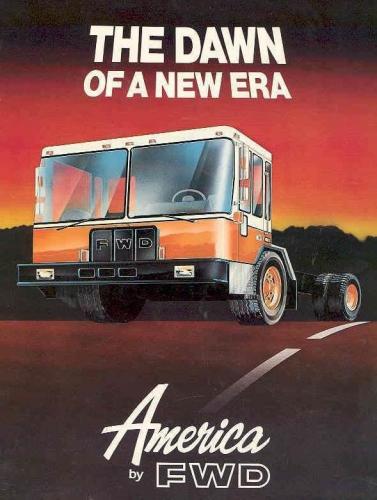
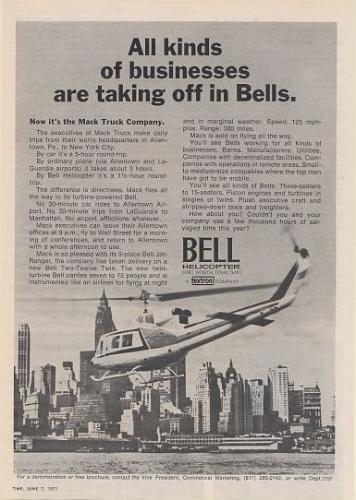
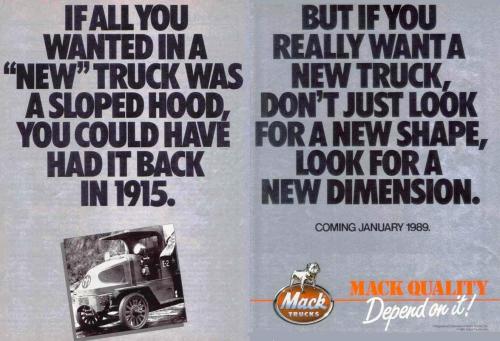
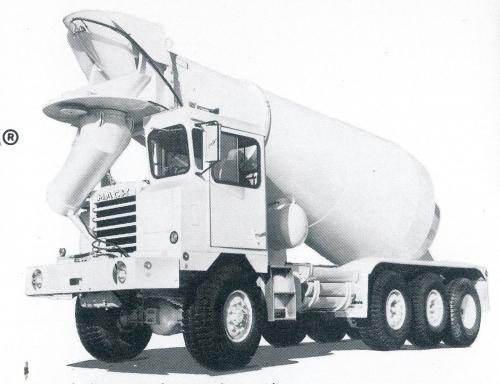
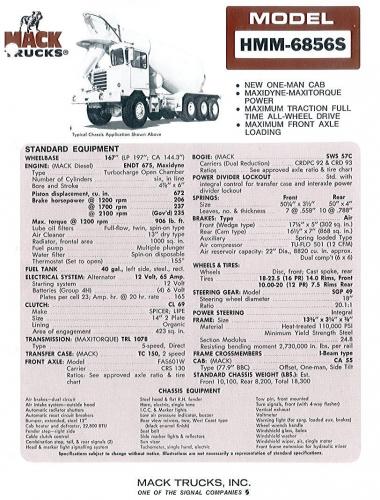
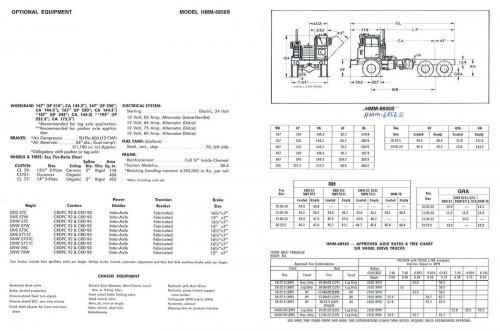
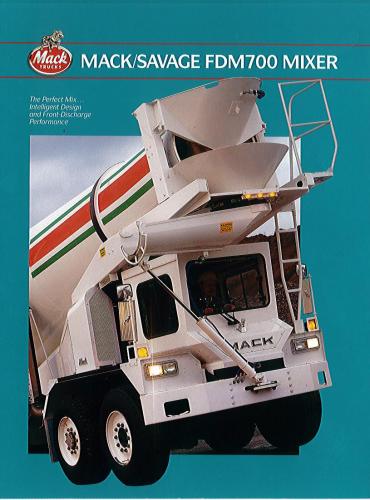
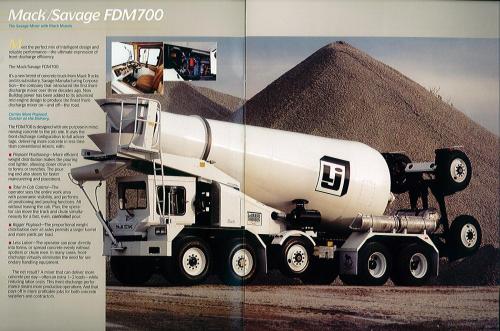
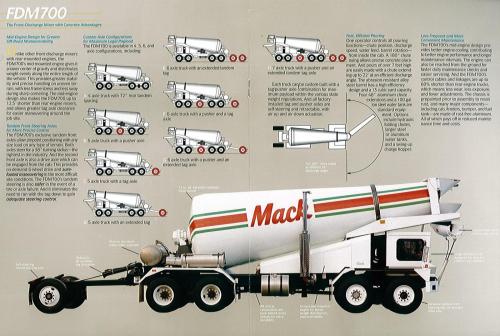
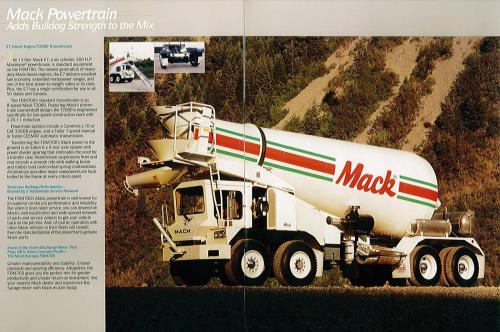
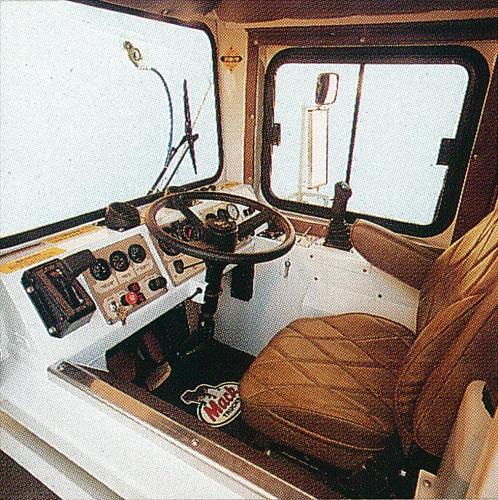
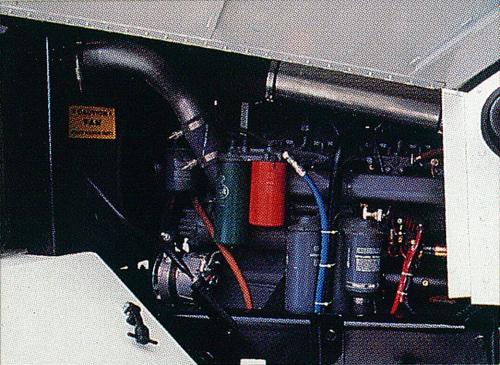
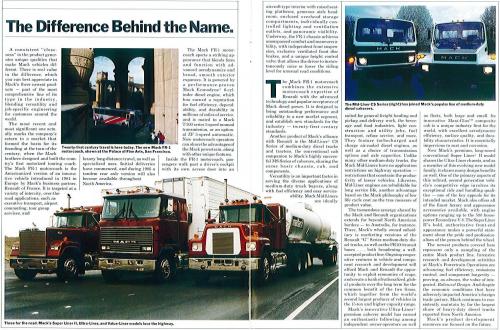
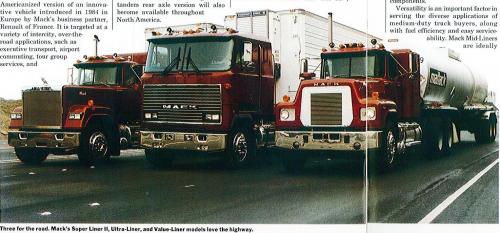
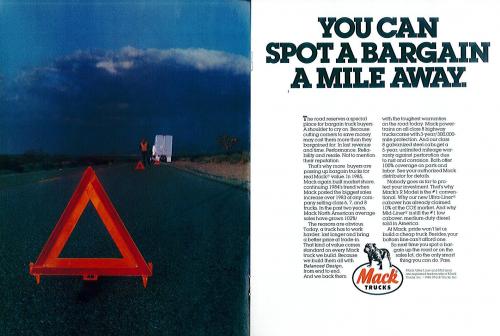
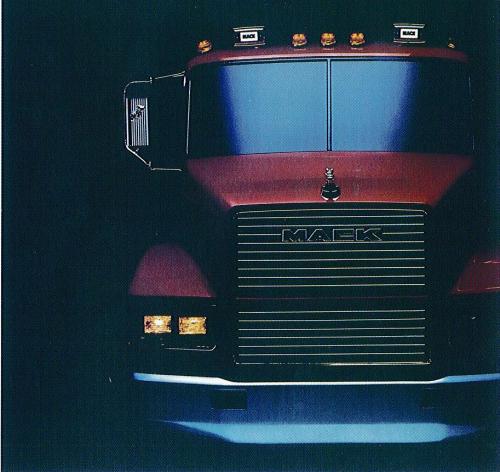
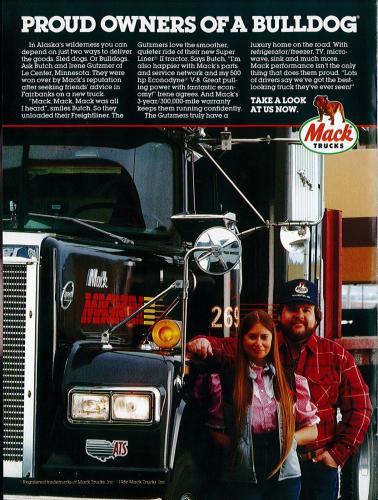
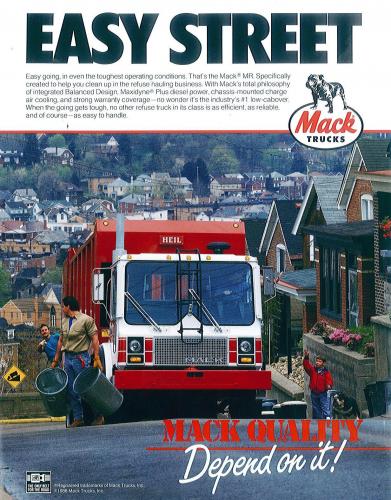
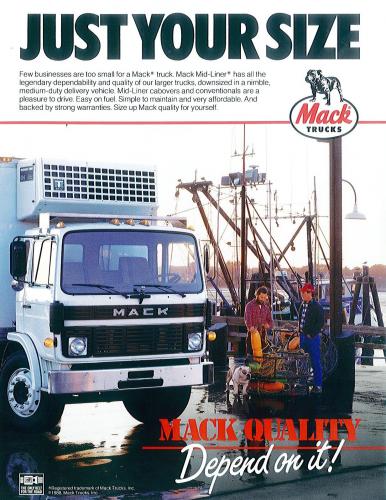
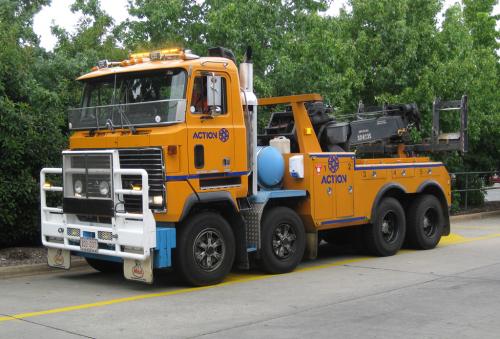
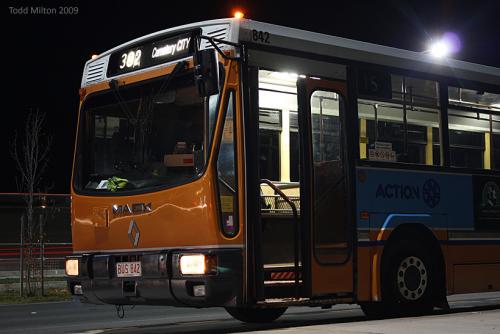
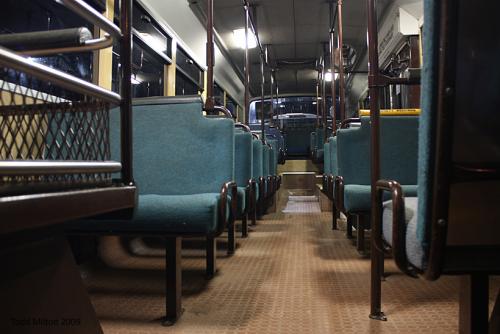
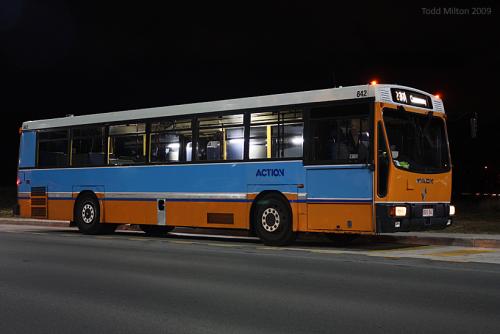
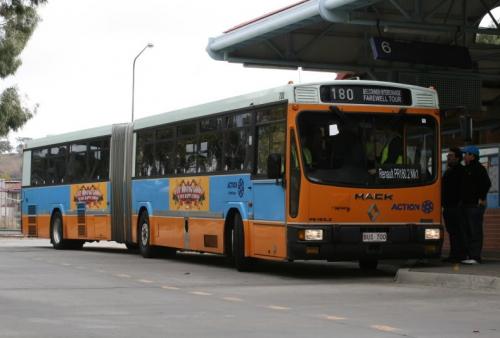
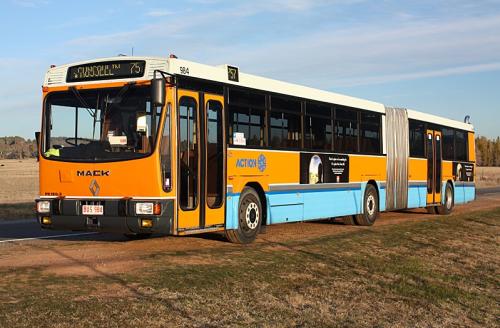
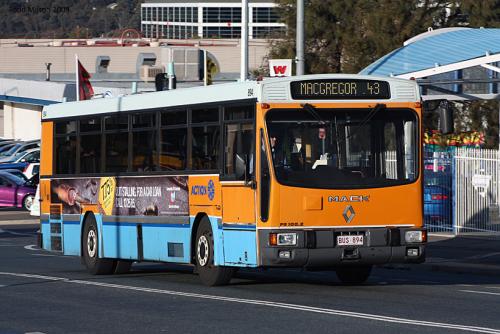
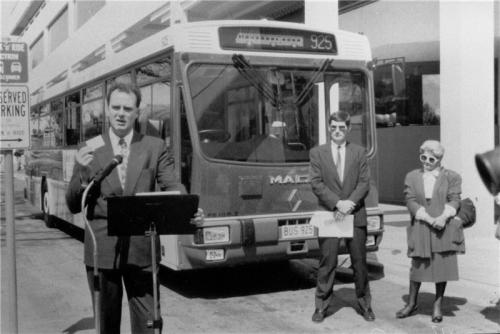
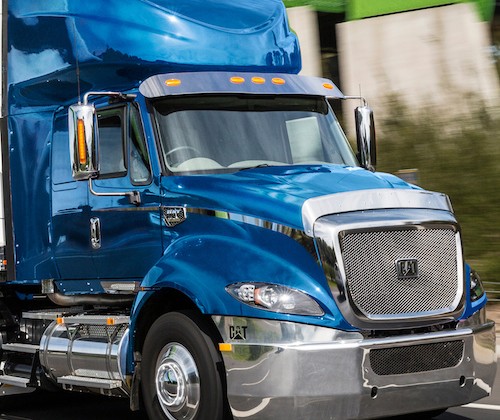

Comin' On Strong With Mack's V-8 Thermodyne Diesel
in Modern Mack Truck General Discussion
Posted
Ref. http://www.bigmacktrucks.com/index.php?/topic/34267-macks-v8-powered-c-series-comin-on-strong/
.